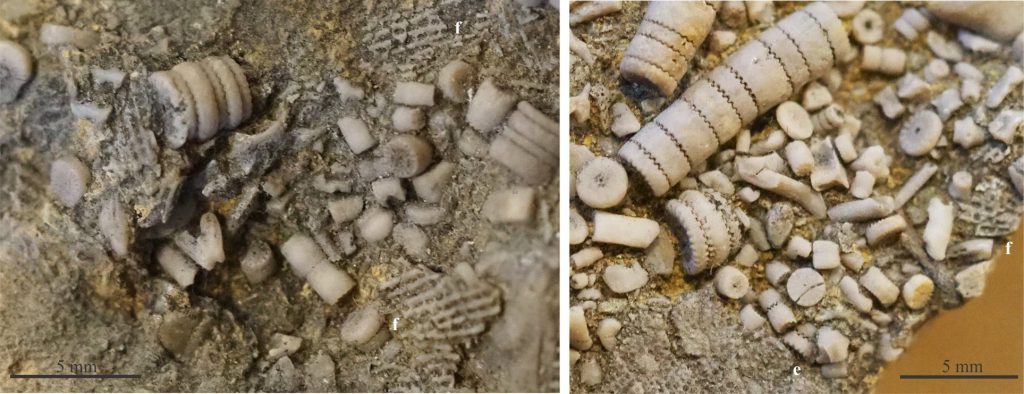
Bryozoa – are a complex but important group of reef and non-reef invertebrates and contributors to bioclastic sediment.
Bryozoa are an incredibly diverse group of metazoans with a geological record extending from Early Ordovician to Recent. There are more than 6000 extant species and probably 2-3 times that number of fossil species. They were once classified as plants, or moss animals, because in many cases that’s exactly what they look like. But they are metazoans, tiny as individuals (zooids, commonly less than 1 mm diameter), but as colonial organisms can construct sizeable, rigid mounds and thickets. The majority are marine; a small group, the order Ctenostomata are non-marine. Bryozoa are important contributors to bioclastic sediment in shallow, cool-temperate water depositional systems. The larger buildups also provide an ecological niche for other organisms.
The zooids are housed within structures built of calcium carbonate, chitin, or a mix of both; the solid skeletal structure of a colony is called a zoarium (pl. zoaria). The exoskeleton constructed by an individual zooid is called a zoecium (pl. zoecia). Most species secrete either calcite or aragonite exoskeletons. Only the carbonate forms have good preservation potential (so it’s worth keeping in mind the likelihood that in fossil bryozoan assemblages there will probably be “missing” species). Many species contain a mix of calcite and aragonite. For modern bryozoans the proportion that secretes aragonite is greatest in tropical realms, generally decreasing in cooler waters at higher latitudes. The Mg content of calcites is also highly variable, ranging from 0 to 16 (mol)% (Smith, 2014 – for a review of some modern bryozoans).
Common forms range from low relief encrusters on bedrock, shells, and seaweed, to rigid frameworks and thickets that are delicately or robustly branched (some coral-like), palmate (shaped like a palm tree), or fenestrate (window-like) and lacy, anastomosing sheets, massive domes, and even corkscrew structures commonly labelled as Archimedes screws. Colonies a few centimetres long may house a million and more zooids.
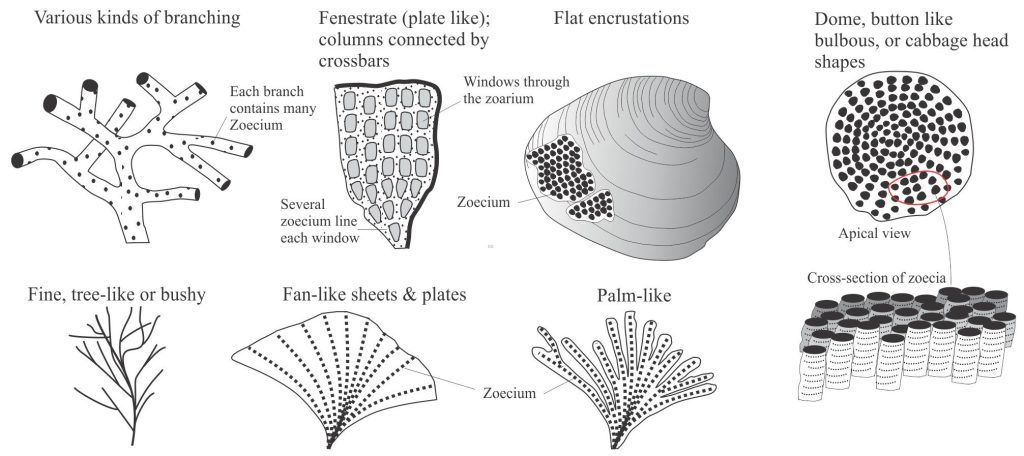
Secretion of calcium carbonate confers a degree of rigidity to bryozoa, but in the grand scheme of sediment production and dispersal, they are relatively delicate structures. This is particularly the case for delicately branched and sheet or plate-like zoaria. As fragments in grainstones and rudstones, their identification even to the level of bryozoan order can be difficult. In thin section, fragment identifications generally rely on a relatively ordered arrangement of zoecium that are regularly spaced and of similar size and shape. Note that the size and shape of the zoecium may change as the orientation of the fragment changes.
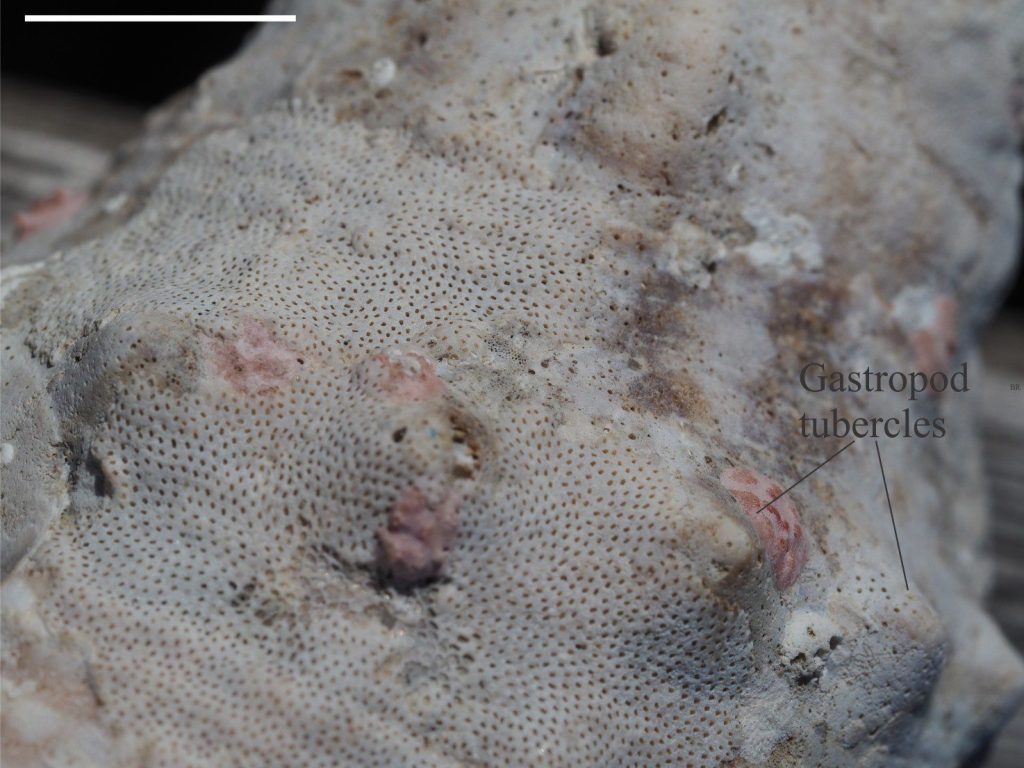
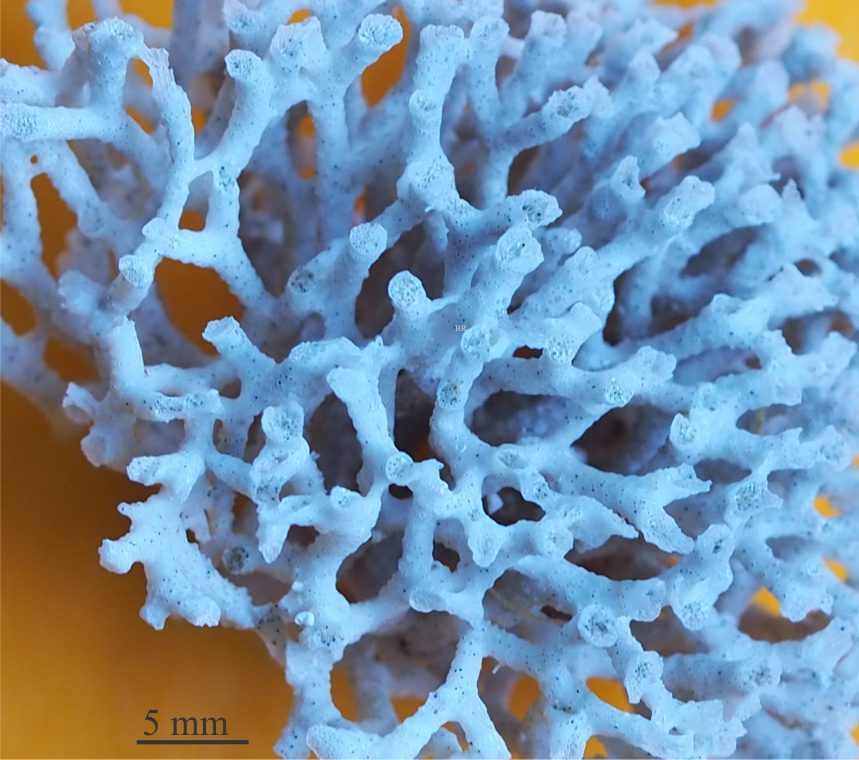
Differentiation from some other phyla
Corals:
- The corallites of solitary or colonial corals are significantly larger than bryozoan zoecium
- Corals are composed of aragonite, that in most cases will recrystallize to low magnesium calcite during burial diagenesis.
- Corallites have well defined internal structure, founded on septa (vertical plates of aragonite) that radiate from a central column – zoecia have no such internal structure.
Barnacle plates:
- Basal sections of barnacle plates commonly show an array of large pores that resemble bryozoan zoaria. However, the barnacle fragment may also show its characteristic plicate layered structure. Bryozoa exoskeletons have no well-defined layering.
Echinoderms plates:
- There is a superficial resemblance between fenestrate bryozoa and perforated echinoderm plates, where pores in the latter are commonly arranged linearly or in quasi-radial patterns. Echinoderm plates also consist of a single calcite crystal – this will show as uniform extinction across the entire plate. Bryozoa plates consist of a myriad, microscopic acicular crystals that during diagenesis will recrystallize to calcite spar.
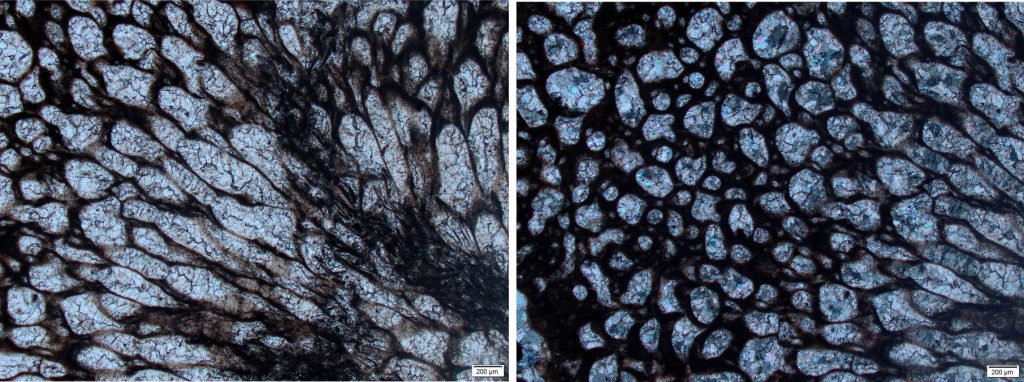
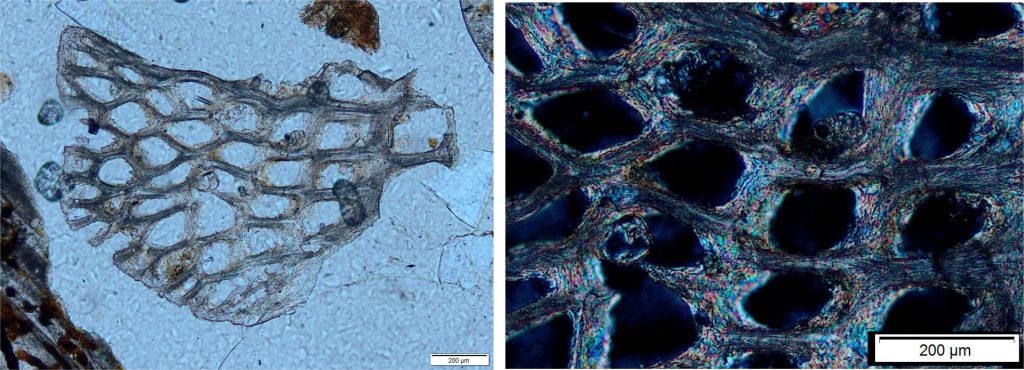
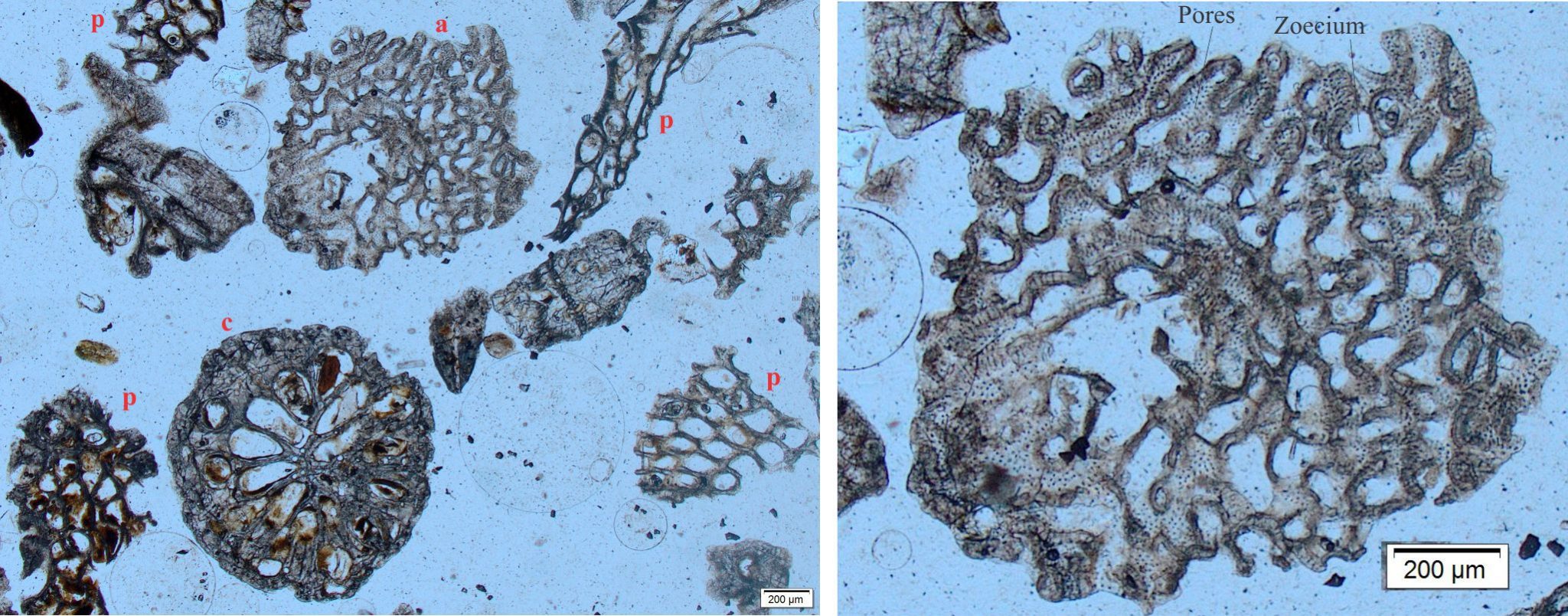
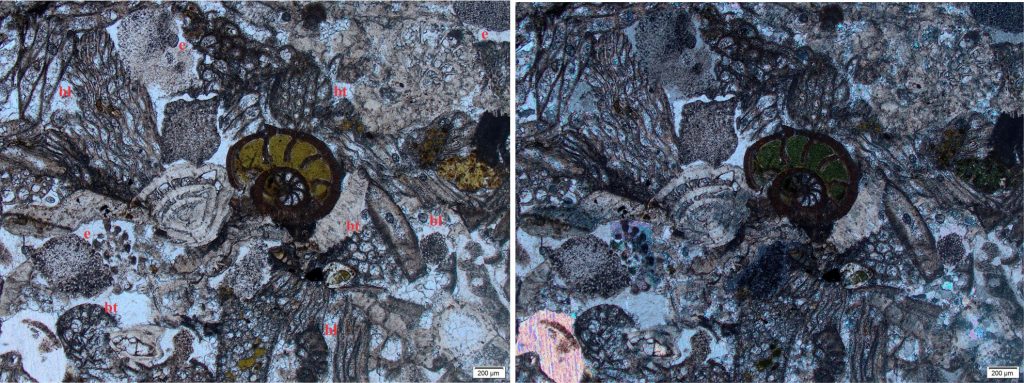
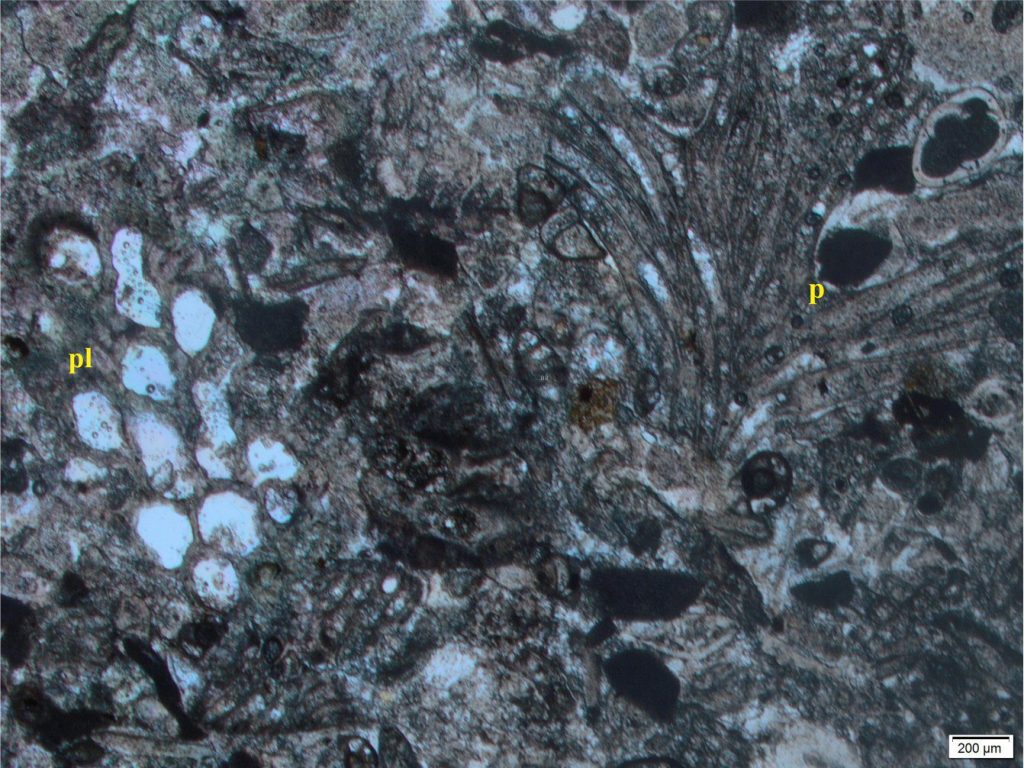
Acknowledgement
Many thanks to Kirsty Vincent, Earth Sciences, Waikato University for access to the petrographic microscope.
Other posts in this series
Brachiopod morphology for sedimentologists
Bivalve shell morphology for sedimentologists
Gastropod shell morphology for sedimentologists
Cephalopod morphology for sedimentologists
Optical mineralogy: Some terminology
Carbonates in thin section: Echinoderms and barnacles
Carbonates in thin section: Molluscan bioclasts
Carbonates in thin section: Forams and sponges
Neomorphic textures in thin section
Mineralogy of carbonates; skeletal grains
Bivalve morphology for sedimentologists
Mineralogy of carbonates; non-skeletal grains
Mineralogy of carbonates; lime mud
Mineralogy of carbonates; classification
Mineralogy of carbonates; carbonate factories
Mineralogy of carbonates; basic geochemistry
Mineralogy of carbonates; cements
Mineralogy of carbonates; sea floor diagenesis
Mineralogy of carbonates; Beachrock
Mineralogy of carbonates; deep sea diagenesis
Mineralogy of carbonates; meteoric hydrogeology
Mineralogy of carbonates; Karst
Mineralogy of carbonates; Burial diagenesis
Mineralogy of carbonates; Neomorphism

















